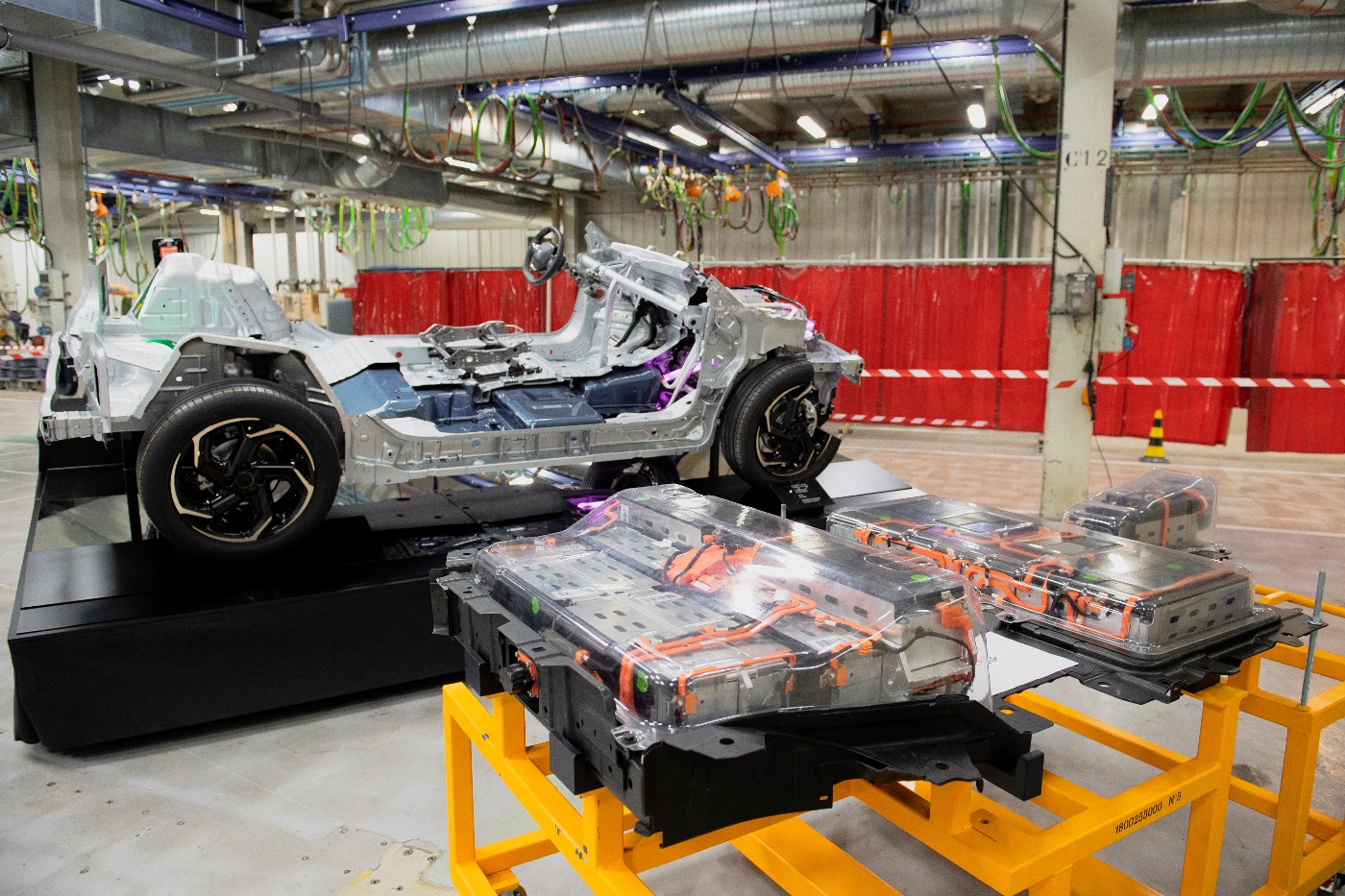European car manufacturer draws in resources to meet BEV demand while Japan develops cartridge batteries
Peugeot has provided an insight into its European operations and showcased its growing team of technicians who are responsible for assembling and testing every battery that goes into its electric cars (100% electric or Plug-in Hybrid) and vans. The group of employees undergo a programme of specific training before they join the European factories of the car manufacturer in Spain, Slovakia and France.
As well as the initial prototyping, simulation, accreditation testing and extended reliability testing that the cars and powertrains are subjected to, each production battery goes through a series of tests on the production line to ensure its reliability, performances and lifecycle.
Electrification programme
Peugeot’s electrification is accelerating in 2022 with the new 408, which is set to strengthen the brand’s Plug-in Hybrid range, also reinforced by the recently launched new 308. In 2022, more than 70% of the Peugeot range sold worldwide is electrified. In Europe, the brand’s electrified models represent one passenger car out of four in the first half of the year, up from one out of every six in 2021.
By 2025, 100% of the Peugeot model line-up will offer an electrified variant. This will require a substantial uplift in the number of batteries being produced. Peugeot estimates it will assemble up to 10,000 batteries a month for its car range by next year, and as many as 7,000 batteries a month for its LCV range.
Battery Testing
It takes roughly 60 minutes for the skilled technicians to assemble each 50kWh battery unit (pre-assembled cells and components). 90 minutes are necessary for the larger 75kWh units. The team subjects each battery to a series of critical tests, allowing each unit to be guaranteed with the company’s warranty policy for 70% of its charge capacity.
The testing process is mandatory to sign off the batteries before they are released for assembly. The first test simulates operation of the battery in a vehicle to validate reliability. It then undergoes a performance test to assess it at full power.
The final test is a sealing test. The battery unit is pressurised by gas to check for leaks by monitoring pressure loss. A proper seal will prevent water or dirt from getting inside the battery cells and compromising its lifecycle or performance.
The test and assembly operators work in the dedicated battery assembly workshops of five plants of the Stellantis Group: Vigo & Saragossa (Spain), Trnava (Slovakia), Sochaux & Mulhouse (France) and soon Hordain (France). Both electric and conventional combustion engine vehicles are assembled on the same line.
The technicians who test and assemble the Peugeot vehicles’ batteries come from Stellantis’ factories. They are selected on the basis of their electrification skills and are given month-long specialist training. As a consequence of the energy transition and of the increasing mix of electrified models, Peugeot and the wider Stellantis Group are increasing the number of technicians qualified to assemble and work on electrified vehicles.
According to Jérôme Micheron, Peugeot Product Director, the electrification of the Peugeot range has so far been a success with LEV (Low Emission Vehicle) models representing one out of four passenger car sales in Europe in the first half of 2022.
“Peugeot provides a wide range of electrified vehicles with the full-electric e-208 and e-2008. Other models come with Plug-in Hybrid engines. The provision of LCV alternatives is complete with 100% electric versions being available.”
Cartridge Batteries
Yamato Transport and Commercial Japan Partnership Technologies Corporation (CJPT) will begin studying the standardisation and commercialisation of replaceable and rechargeable cartridge batteries as part of energy management efforts for achieving a carbon neutral society.
The introduction of commercial battery electric vehicles (BEVs) poses several challenges, including recharging times that are longer than refuelling times for conventional petrol and diesel vehicles, as well as increased logistics downtime when vehicles and cargo are at a standstill due to numerous vehicles recharging at or around the same time. The introduction of commercial BEVs is also expected to impose an increasing burden on society as a whole, such as by increasing peak electricity demand at business sites due to concentrated recharging by numerous non-operating vehicles.
To solve these issues, Yamato Transport and CJPT will begin studying the practical application of detachable and portable cartridge batteries based on their advantages over fixed installation batteries.
Cartridge batteries are able to reduce the cost of BEV introduction by limiting battery capacity requirements and therefore the total amount of batteries required to match actual driving-range needs.
They are also able to reduce the recharging burden related to the installation of recharging infrastructure and therefore also a reduction in logistics downtime as a result of the reduced charging time requirement. In addition, since the cartridges are able to be recharged at any time, they will flatten the overall peak electricity demand.
CJPT also intends to advance plans for the use of cartridge batteries in commercial BEVs. The company envisions the use of common cartridge batteries and recharging systems for vehicles ranging from BEV mini-commercial vans to BEV light-duty trucks and thereby reducing the cost of commercial BEVs and encourage their more widespread use. As an energy-management solution, the company seeks to propose ways to achieve battery use that matches actual use requirements.
Meanwhile, Yamato Transport aims to build a green delivery network that includes its transport and delivery partners by co-creating with communities a cartridge battery-based electricity utilisation scheme. In addition to promoting the use of green power by eliminating the gap between renewable energy generation peaks and the timing of recharging commercial BEVs, the company also intends to study ways to increase the resilience of electric energy supply communities, such as by delivering cartridge batteries in times of disaster to areas where it is difficult to maintain electric power infrastructure.
- UK manufacturing steps up to COVID-19 crisis - April 2, 2020
- Clustering Innovation - March 12, 2020
- A Global Monitor - March 6, 2020

